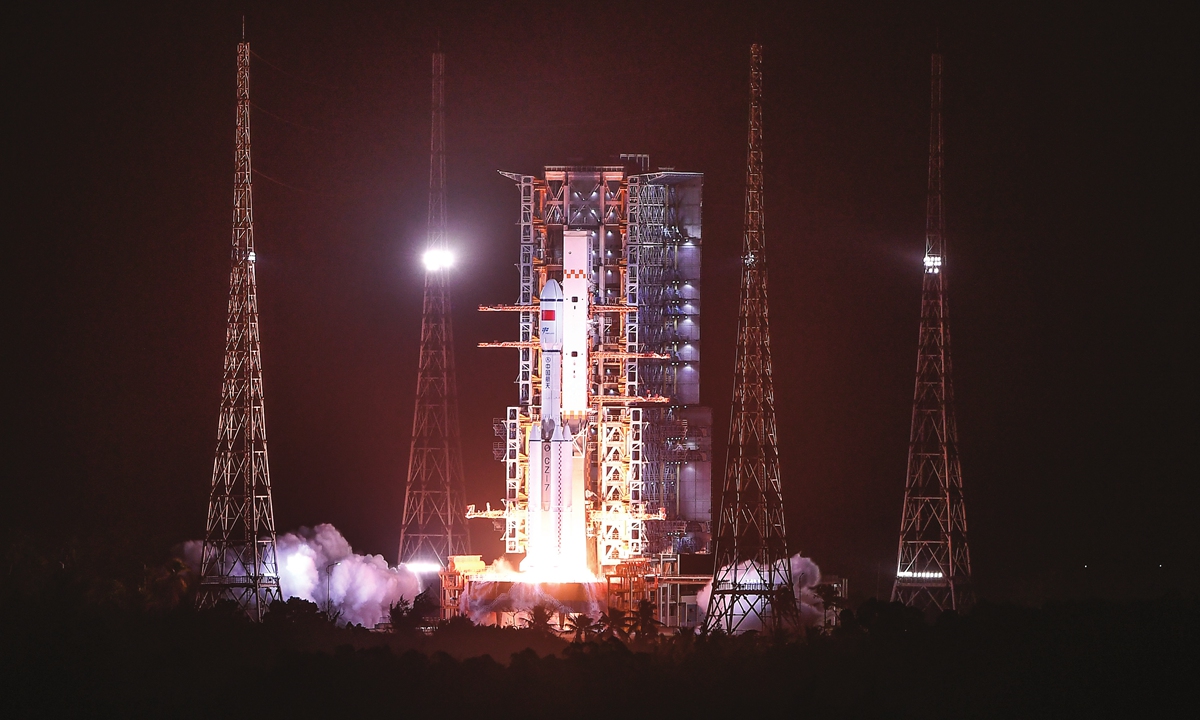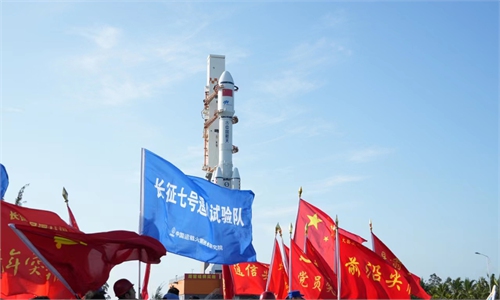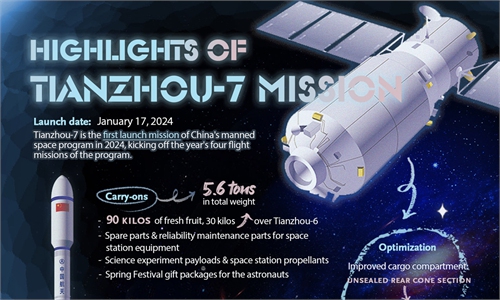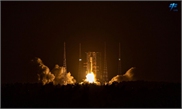Simulation experiments expected on China's space station to explore the existence of extraterrestrial life

Cargo spacecraft Tianzhou-7 atop a Long March rocket blasts off from Wenchang Spacecraft Launch Site in Hainan Province at 10:27 pm (Beijing Time) on January 17, 2024. The mission will deliver supplies to the orbiting manned Tiangong space station, China Manned Space Agency said. Photo: Xinhua
Along with the Tianzhou-7 cargo spacecraft that has successfully docked with China's Tiangong space station early Thursday morning, a special delivery has arrived - anaerobic archaea. By simulating extraterrestrial environments, Chinese researchers aim to verify the age-old mystery of whether life exists outside of Earth.
The anaerobic archaea are one of the oldest life forms on Earth and a major contributor to methane in the Earth's atmosphere. They are widely distributed in anaerobic environments such as deep-sea environments, rice paddies, and the stomachs of ruminant animals.
The reason why this kind of microorganism was selected to "go on an adventure into space," Dong Xiuzhu, a research fellow at the Institute of Microbiology, Chinese Academy of Sciences said that while others may need complex factors in order to survive, anaerobic archaea can thrive with just hydrogen and carbon dioxide, and then transform into methane.
Carried by the Tianzhou-7 cargo spacecraft, these anaerobic archaea have been sent to the Chinese space station on Thursday.
By utilizing the space station's exposure to cosmic radiation, coupled with its microgravity environment and other extreme factors such as temperature, this type of environment examines the survival capabilities of early life forms from Earth under these conditions, Liu Zhu, Professor in the Department of Earth System Science, Tsinghua University, was quoted as saying in an interview with the China Central Television (CCTV).
According to media reports, NASA's Curiosity rover, since landing on Mars in 2012, has detected inexplicable methane signals on multiple occasions. Scientists speculate that these methane emissions could possibly be byproducts of extraterrestrial biological metabolism, with methane-producing bacteria considered as one of the potential forms of life on Mars or Saturn's moon Enceladus.
However, how to determine the existence of methane-producing bacteria has become a challenge for scientists around the world.
Some have considered conducting in-situ detection of extraterrestrial life signals on planets like Mars, but the associated time and economic costs are prohibitively high. On the other hand, using existing equipment such as isotope instruments, the current technological capabilities are still insufficient to achieve the high precision needed for distinguishing the biological origins of methane signals in in-situ detection.
To tackle the challenge, China's experiment seeks to validate from a reverse verification perspective, Liu said.
The expert explained that if the methane-producing bacteria can survive in such environment, and exhibit robust growth while generating methane, it would substantiate that primitive life forms on Earth could indeed thrive in extraterrestrial environments and potentially even grow.
"This insight could provide significant implications: if the methane discovered on Mars is potentially of biological origin, it suggests the possibility of a shared origin between life on Mars and Earth," Liu noted.
Carrying over 260 items of supplies weighing approximately 5.6 tons, Tianzhou-7, the first of the four China manned space program missions scheduled for 2024, arrived at the space station at 1:46 am on Thursday, after the country's fastest rendezvous and docking maneuver completed to date, at only three hours.
It is loaded with experimental payloads, custom cargo packages, and other large items, each weighing over 100 kilograms, as well as 2,400 kilograms of living essentials for taikonauts including special goods for the upcoming Chinese New Year of the Dragon. These are used for the space station's in-orbit operation, space in-orbit scientific experiments, and taikonaut life support.
Global Times



